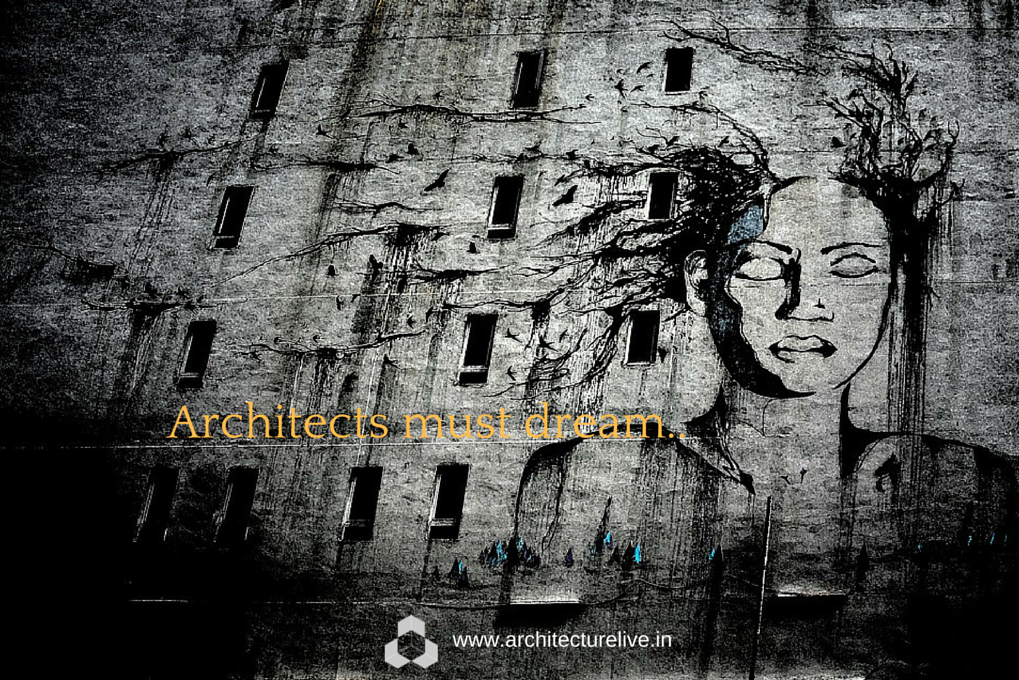
While working in England in late 1960s, and studying simultaneously for final exam. of RTPI, U K, in the RTPI journal I read an article titled as above. So powerful is the title and its’ message, that even after over 45 years, it is etched explicitly in my mind. The article narrated the story of Dr. Watson & his colleague, discoverers of the DNA structure. Despite substantial research, they were stuck in defining the DNA structure. They were so possessed with the problem, that they would be thinking of nothing else. One night Dr. Watson dreamt of two snakes intertwined, like a double helix. Since in everything, they saw only DNA, like Archimedes shouting EUREKA, Dr. Watson moved to the laboratory and tested his dream. He had his D N A structure, with which we are all familiar.
WE NEED DREAMERS.
Architects must dream. One who has to break new ground must dream. Even engineers or Inventors are no exception. Architects who do not dream are NO ARCHITECTS. The profession should thrive on dreams alone. We are familiar with the storey of the Prize winning design for the Sydney Opera House discovered from rejected entries.
Closer home is the story of the competition for the ‘Indira Gandhi Center for Arts’, Rajpath, New Delhi. While the U S Architect Ralph Lerner battled with renaissance architectural styles, Gautam Bhatia won the second prize with incomplete presentations -only sketches. So powerful was his dream that it merited an Award.
Who would have imagined that a Temple can be constructed from top to bottom, except for the Dreamers of Kailasa temple at Ellora, in Maharashtra.
AT THE SAME TIME WE MUST HAVE PEOPLE WHO CAN UNDERSTAND THE DREAM AND PLACE A RIGHT VALUE ON IT.
We need to dream very wildly to improve the quality of Architectural education. It is plagued with several deficiencies for which there is no routine solution. I had some dreams. Perhaps these may be termed foolish – till we get the right people to value it. To get over the quality teachers scarcity, as an incentive for such teachers, CO-OPERATIVE MANAGEMENT of Architectural schools is one dream. The principle simply is that the users and beneficiaries should be stakeholders and participate in the process of taking decisions that would shape their own future. This would give them a root cause to be sustainable and stable. What we need to be careful about is the quality of stakeholders. To be a stakeholder is in itself a strong enough incentive for achieving quality. Teaching faculty is the backbone of any teaching Institution. Their participation in Institutional management as Partners will go a long way.
There are many issues to be settled for them to become stakeholders. These include legal & financial issues. There can be answers to these as well, but to look at those we have to wait till a right man arrives on the scene to put up a right value on this wild idea.
There is another wild dream. Turn Architectural education partly or fully “Apprenticeship” oriented. The main catch here is the quality of persons /firms to whom the student gets apprenticed. Can this approach make any dent on the Professionalism in architectural practice?
There are many unknowns to be answered including legal recognition. To answer these one would have to write a Ph.D thesis or get into a dissertation exercise. One advantage could be that one can address educational & professional matters simultaneously. Partial system change could mean Education in Architecture be made 12+3 years. The institute could provide a B.Sc(Arch) and add to that two years apprenticeship to get them to practice as “Architects” including registering with regulatory authority in architectural profession. Alternatively all four or five years can be apprenticeship.
The requisite system changes for this will have to be far reaching but it is achievable. We may try to learn something from Chartered Accountants.
These are but wild dreams or ideas at the moment. I hope these are not termed as thoughts bordering on Insanity.
Written by Late Prof. M.N.Joglekar, this article originally appeared in Aayojan School of Architecture’s Newsletter – Manthan








One Response
Interesting